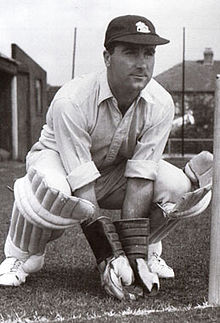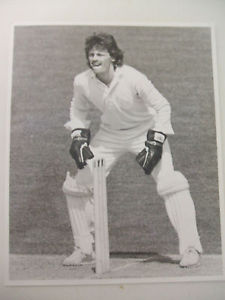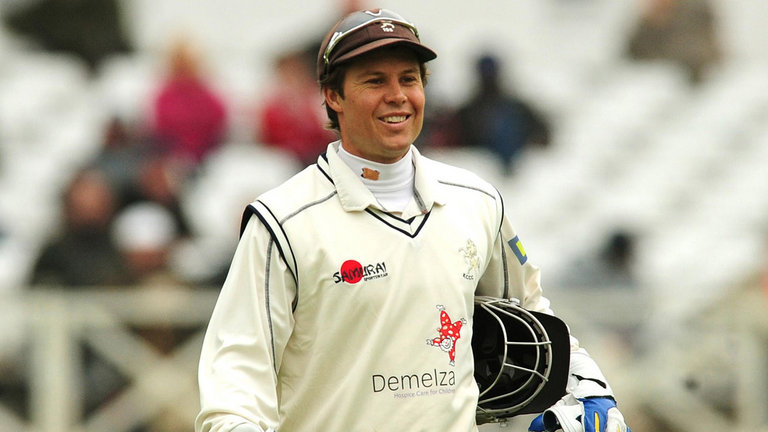Continuing the history of the club, based on the original article written by the Hon. Curator of Kent CCC, David Robertson.
For all the talent which Kent produced in batting and bowling, the area of cricketing brilliance with which the County has become especially noted is in producing world class wicket-keepers. In the 1880s, Kent’s keeper was the splendidly named Edmund Ferdinando Sutton Tylecote, who played six times for England, and was one of the first glovemen to dispense with a long-stop. Neither Jack Hubble or Fred Huish, who were the ‘keepers in the years from 1904-1929 won international honours, but both must have been very close to it. The former, who played from 1904 to 1929 was in the best tradition of wicket keeper-batsmen, with 628 dismissals from 343 matches besides scoring 10,229 runs at 23.51. Huish could not compare as a batsman with a more modest 7,247 runs at an average of 12.84, but he tops the list for dismissals, with 901 catches and 352 stumpings in 469 matches.
Jack Hubble was followed into the Kent side by Leslie Ames, whose career with Kent began in 1926 and ended on his retirement as Manager in 1974. Many would say he was the finest wicket keeper batsman of all time, with nearly 30,000 runs for the County, 78 hundreds, a highest score of 295 and 842 dismissals including 330 stumped. He played a total of 430 matches for the county, as well as 47 Test Matches for England, in which he scored 2,434 runs at an average of 40.56 and dismissed 97 batsmen of whom 74 were caught and 23 stumped. He is the only wicket-keeper/batsman to have scored over one hundred first-class hundreds, a record that he will probably keep for all time. He also became Kent’s first cricket manager, in deed if not in name, and his guidance led the county to its golden years in the 70s.
With the calls on Ames for Test Matches, Kent was fortunate to have a second top-class wicket-keeper throughout the 1930s, a colourful character by the name of Howard “Hopper” Levett, who was also up to international standard and may well have participated in more than one overseas tour – to India in1933-34 – had it not been for the brilliance of Ames. He was probably the second-best wicketkeeper in the country during the 1930s although he could not compare with Ames as a batsman (average 12.08). But he kept wicket in 142 matches, taking 228 catches and stumping 169. The stories about the convivial ‘Hopper’ Levett are many and legendary, often involving his ability to party as thoroughly as he played his cricket, and often at the same time.

T.G. Evans
Then in 1939 along came Godfrey Evans, a young man who originally hoped to become a world champion boxer, but who went on to become a world beating wicket-keeper instead. Christopher Martin-Jenkins described him as “sound as a bell and spectacular as a catherine wheel”, which goes close to doing justice to Evans the entertainer and Evans the brilliant wicket-keeper. His arrival at the club allowed Leslie Ames to relinquish the gloves for much of the time, although Evans himself was called up for England 91 times between 1946 and 1959, which gave other men, notably Derek Ufton, their chance. Evans, as convivial a character as his predecessor Levett, was for many years considered the best wicket-keeper in the world, yet his record for Kent places him only sixth on the list with 554 dismissals (451 caught and 103 stumped). In all first-class cricket, he trapped 1,060 batsmen, including 219 for England, which was a Test match record until it was beaten by another Kent ‘keeper, Alan Knott. Evans was no mean batsman either, scoring 9325 runs for Kent, as well as two Test centuries and almost 15,000 runs in all matches.
Alan Knott rewrote the record books. From his debut for the county in 1964, it soon became clear that Kent had a worthy successor to Evans. Like Evans, Knott was quick-footed and much happier attacking than defending, whether as a keeper or a batsman, and like Evans, who had Doug Wright’s leg-spin to work in tandem with, Knott had Derek Underwood’s unique left-arm bowling to partner. The two pairs made life very difficult for opposition batsmen. Knott played 95 times for England, and finished with 269 Test victims to add to his 915 for Kent.
After Alan Knott, the next in line was Steve Marsh, who played for the county from 1982 to 1999, and dismissed 749 batsmen in 291 games, at a rate per match (2.57) only beaten by Geraint Jones (3.11), Huish (2.67) and Knott (2.62) among the leading keepers for the county. Marsh, who captained the county from 1996 to 1998, was unlucky not even to win an ODI cap for England, but on his day was as safe, and as exciting, as the best of Kent’s keepers.
 Steve Marsh
Steve Marsh
 Geraint Jones, born in Papua New Guinea to Welsh parents, raised in Australia and turned down by Glamorgan, came to Kent in 2001 and quickly established himself as the first choice keeper. His talents were quickly recognised by the England selectors, too, despite the competing claims of such fine keepers as James Foster of Essex and Chris Read of Nottinghamshire. He played 34 Tests for England between 2003-04 and 2006-07, notably including the 2005 Ashes series where his catch off Steve Harmison to seal victory at the Edgbaston Test was one of the outstanding moments of even that astonishing series. After finishing his Test career, Jones played for Kent for almost another decade, including a run of over 100 consecutive county games. He was a worthy addition to the roll of great Kent keepers.
Geraint Jones, born in Papua New Guinea to Welsh parents, raised in Australia and turned down by Glamorgan, came to Kent in 2001 and quickly established himself as the first choice keeper. His talents were quickly recognised by the England selectors, too, despite the competing claims of such fine keepers as James Foster of Essex and Chris Read of Nottinghamshire. He played 34 Tests for England between 2003-04 and 2006-07, notably including the 2005 Ashes series where his catch off Steve Harmison to seal victory at the Edgbaston Test was one of the outstanding moments of even that astonishing series. After finishing his Test career, Jones played for Kent for almost another decade, including a run of over 100 consecutive county games. He was a worthy addition to the roll of great Kent keepers.
Waiting in the wings to add his name to that list is Sam Billings. Already capped several times by England at ODI and T20 level, the question is whether this young wicket-keeper batsman can go on to become another of Kent’s great keepers. All of Kent hope he will.
0 Comments